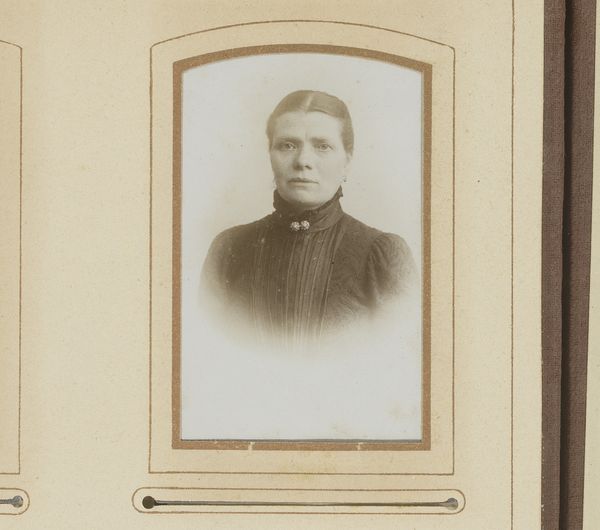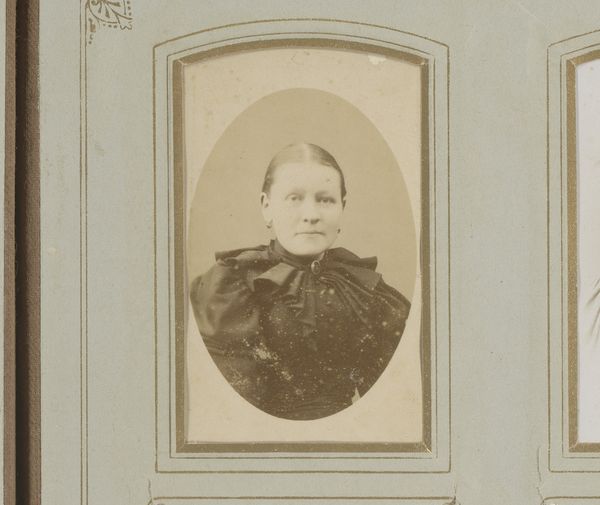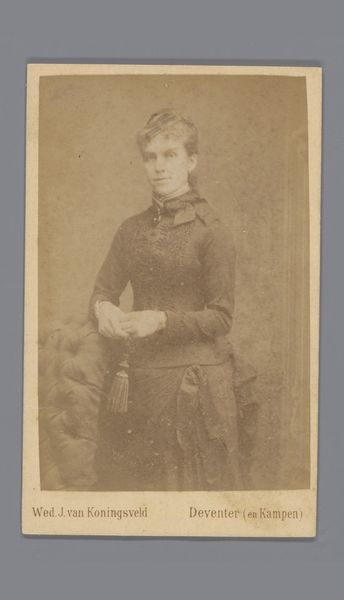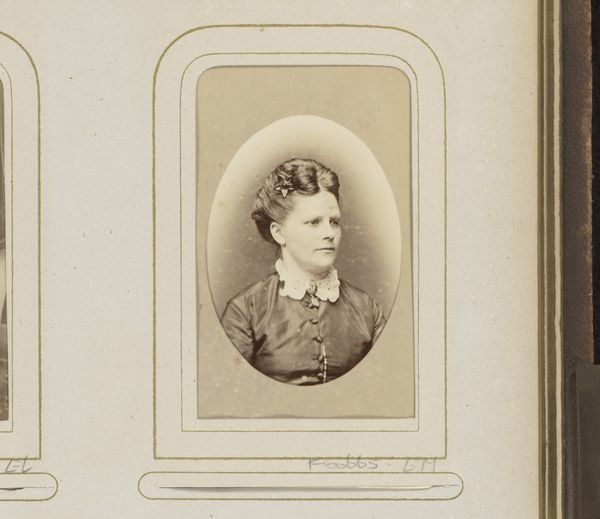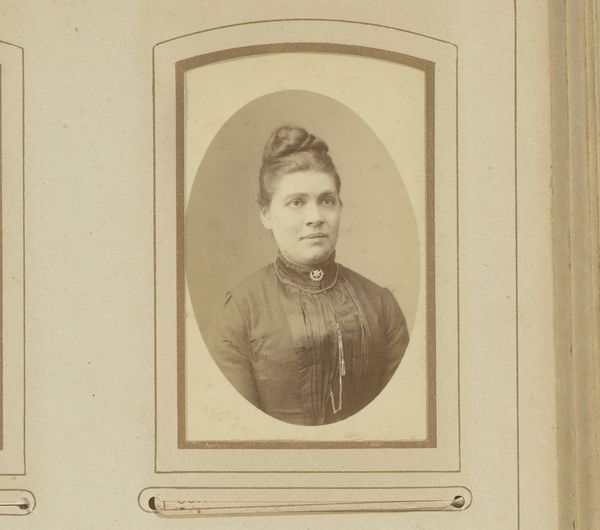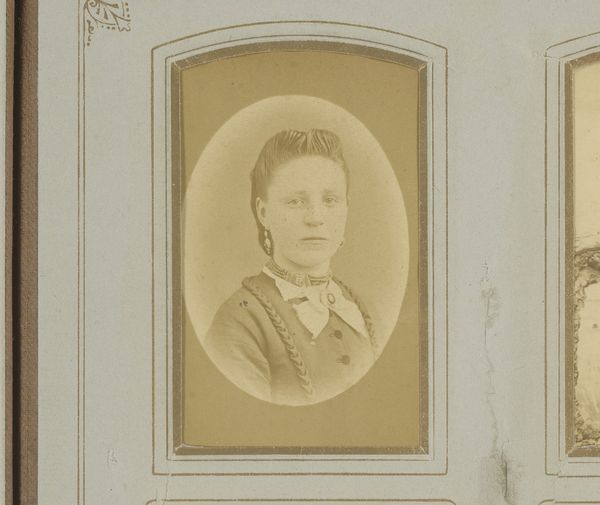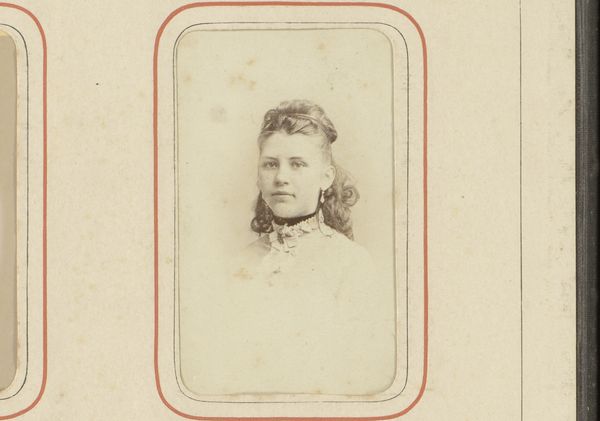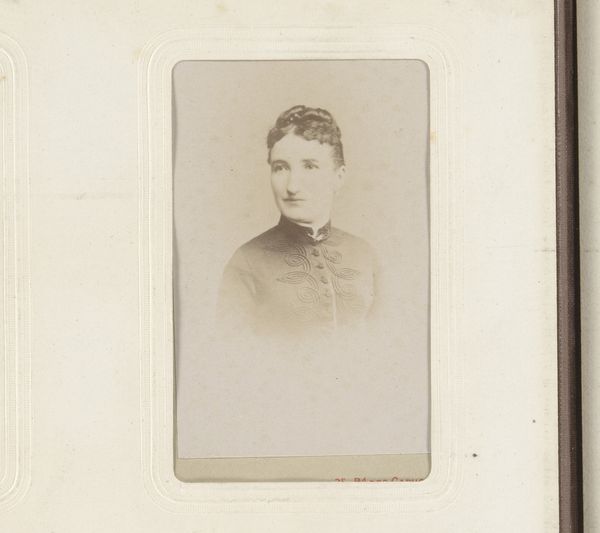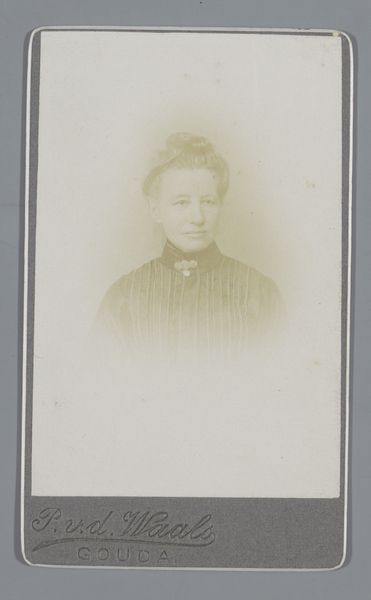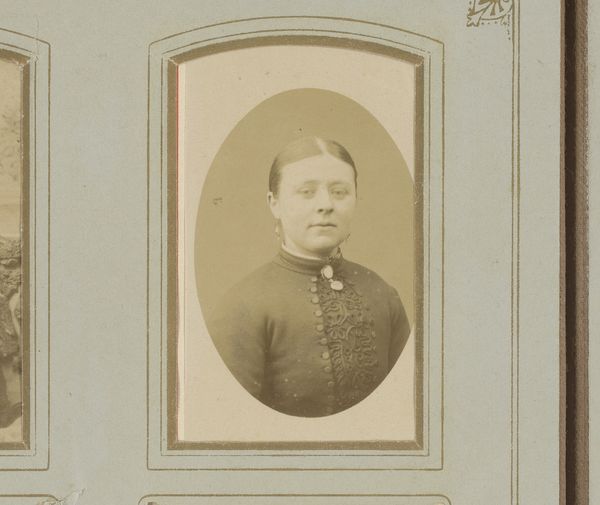
daguerreotype, photography, gelatin-silver-print
#
portrait
#
daguerreotype
#
photography
#
gelatin-silver-print
Dimensions: height 83 mm, width 51 mm
Copyright: Rijks Museum: Open Domain
Curator: This photograph, entitled "Portret van een vrouw met halssieraad", was taken sometime between 1860 and 1900 by Wiman & Zander. It’s a gelatin silver print. What’s your first impression? Editor: It feels restrained. There’s a formality and stillness that suggests a certain social pressure—an expectation for women of that era. Curator: I think that’s a keen observation. The woman's dark clothing against the sepia tones contributes to the rather severe mood you are sensing, especially when contrasted with her simple, decorative necklace and the small brooch. The neck adornment, like a delicate bloom at her throat, could also signify something deeper. A signifier of nascent individualism, or an acceptance of cultural beauty standards? Editor: Exactly, the placement and nature of these delicate elements might act as coded messaging against the darker uniformity. In many cultures, necklaces hold talismanic properties, or might serve as symbolic ties to familial lineage. Perhaps she felt trapped within those rigid social expectations, her jewelry being an understated act of reclamation. It’s possible to understand what the necklace means only from within the history of photographic and self-representation of the 19th century female experience. Curator: You're inviting us to consider the history embedded in those objects, like little capsules of cultural memory, it's quite insightful. This image would originally have been a daguerreotype but has been transferred to a silver gelatin print. Daguerreotypes were commonly viewed as mirrors, not photographs—an intriguing notion when considering how self-image was crafted. Editor: That speaks volumes to the intended impact of this piece. Mirrors encourage introspection; she's not just being looked at, but potentially reflecting upon her place in the world and making the viewers also do so. As our eyes lock, the emotional weight transcends the purely aesthetic; it turns this intimate photograph into a historical record. It is both extremely powerful and yet simultaneously a quite private encounter. Curator: Thank you for that. I now see how an image such as this allows one to witness not just a likeness but the struggle of constructing one's identity at a particular time and place. Editor: Likewise, this photograph invites us to reassess how women were encouraged, and permitted, to engage and represent themselves to society at large, giving us a broader understanding of her identity today.
Comments
No comments
Be the first to comment and join the conversation on the ultimate creative platform.
